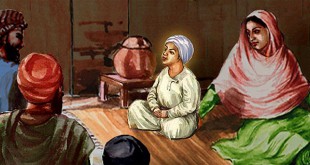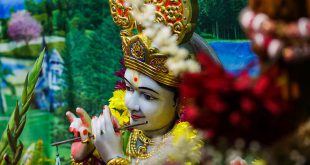 The druids were the priests of the Celtic people who lived in Britain before the Romans came. It is thought that these people arrived in Britain in 500 B.C., when Stonehenge was itself a thousand years old. The druids worshipped trees such as oak and the rowan, and especially the mistletoe, which was supposed to hold the life of the tree when in winter the tree appeared to die. It is doubtful whether the druids used Stonehenge as a temple as modern druids do today on Midsummer’s day. They preferred woods and other leafy places to worship in, and this made it extremely hard for the conquering Romans to find them and stamp out their religion. In fact they were never completely wiped out, the Romans deciding that it was better to tolerate them than to attempt the impossible task of getting rid of them altogether. Some of the druids’ beliefs were similar to those of modern religions. They believed, for example, that the soul was immortal, and that on the death of the body, the soul passed to another body. But the method of entering their priesthood was very different from modern practices. Very strenuous feats had to be performed – for example, the candidate had to compose a long and complicated poem while standing up to his nose in icy water, as well as a whole series of other rites. We don’t know how many druids there were at the time, but there are by no means as many today, despite a revival of interest in their cult.
The druids were the priests of the Celtic people who lived in Britain before the Romans came. It is thought that these people arrived in Britain in 500 B.C., when Stonehenge was itself a thousand years old. The druids worshipped trees such as oak and the rowan, and especially the mistletoe, which was supposed to hold the life of the tree when in winter the tree appeared to die. It is doubtful whether the druids used Stonehenge as a temple as modern druids do today on Midsummer’s day. They preferred woods and other leafy places to worship in, and this made it extremely hard for the conquering Romans to find them and stamp out their religion. In fact they were never completely wiped out, the Romans deciding that it was better to tolerate them than to attempt the impossible task of getting rid of them altogether. Some of the druids’ beliefs were similar to those of modern religions. They believed, for example, that the soul was immortal, and that on the death of the body, the soul passed to another body. But the method of entering their priesthood was very different from modern practices. Very strenuous feats had to be performed – for example, the candidate had to compose a long and complicated poem while standing up to his nose in icy water, as well as a whole series of other rites. We don’t know how many druids there were at the time, but there are by no means as many today, despite a revival of interest in their cult.
Check Also
National Philosophy Day: Date, History, Wishes, Messages, Quotes
National Philosophy Day: This day encourages critical thinking, dialogue, and intellectual curiosity, addressing global challenges …
 Kids Portal For Parents India Kids Network
Kids Portal For Parents India Kids Network






